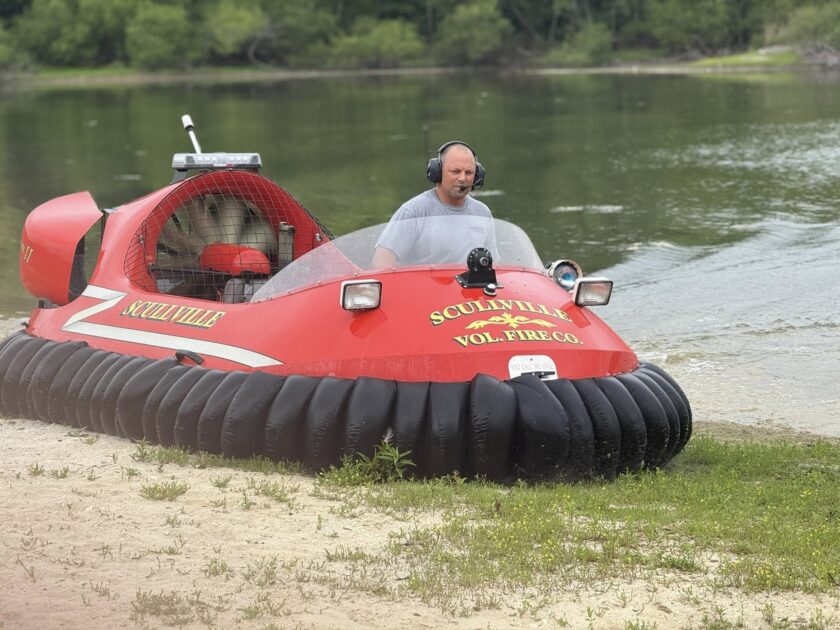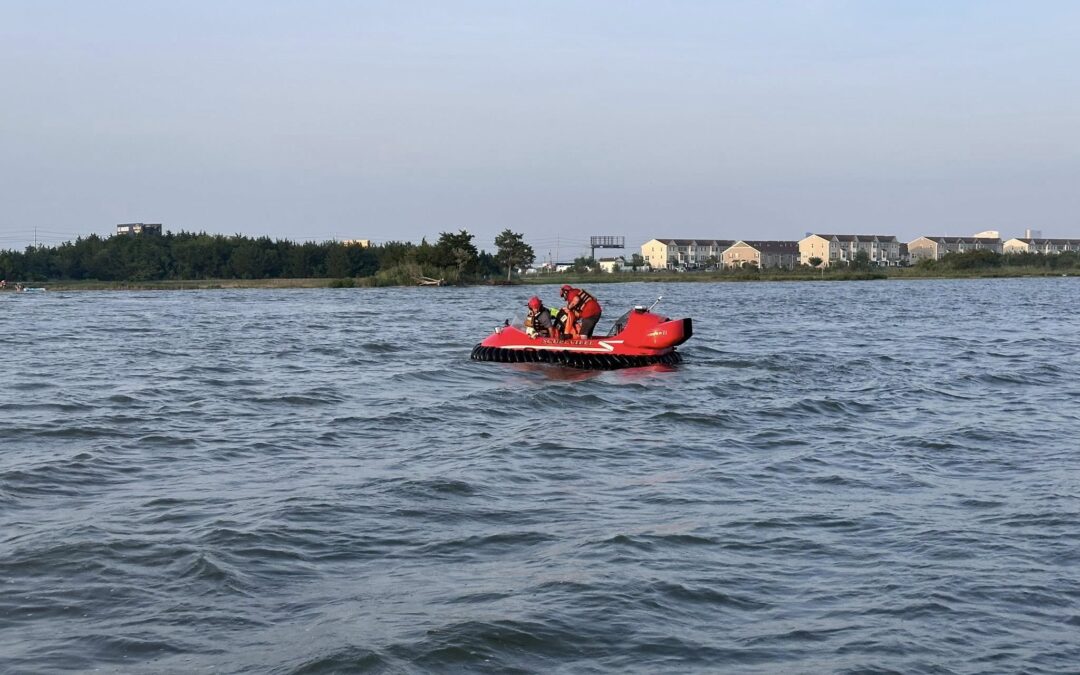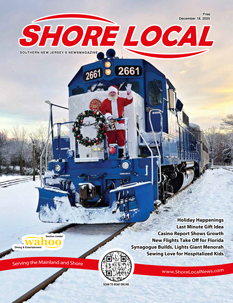In the winding back bays and muddy marshes of South Jersey, traditional rescue boats often fall short. That’s where “Hover II,” a 2005 Neoteric hovercraft operated by the Scullville Volunteer Fire Company, comes into play.
Hover II isn’t a new addition to the department. The Scullville Volunteer Fire Company has had a hovercraft since 1993, though it broke after a couple of years and was replaced by the current one in 2005.
Hover II is designed to glide over nearly any surface — mud, water, ice, snow and even pavement — on a cushion of air.
For years, the fire company used the hovercraft regularly, especially during calls involving stranded jet skiers, kayakers or boaters stuck in muddy areas where traditional boats couldn’t go.
“Usually it’s people stuck in the mud — jet skiers that go up little channels, and when the tide goes out, they get stuck in the mud. We’ve also rescued people off boats stuck in the mud,” Patrick Flynn, assistant chief of Scullville Volunteer Fire Company, said. “It’s usually the calls where people can’t get to with a regular boat.”

Although the department doesn’t use the craft for towing, they do whatever they can to secure people’s equipment.
“We’ll drop an anchor, tie up their WaveRunner or kayak, and get them safely to shore,” Flynn said. “Then they can come back for their gear later.”
Repairs were a challenge for a while because Hover II runs on an ultralight aircraft engine, making it hard to find skilled mechanics. But now, thanks to a reliable technician, the hovercraft is back in regular service.
Operating Hover II isn’t easy. According to Flynn, driving it requires excellent hand-eye coordination, as the hovercraft is steered using a combination of handlebars, rudder and two “buckets” — mechanisms that help the craft slow down, reverse and maintain a hover. Not every firefighter is trained to use the craft, but Flynn and the department’s chief are the most experienced.
Hover II isn’t limited to warm-weather rescues. Flynn recalled responding to emergencies in the dead of winter.
“We pulled seven people off a boat in February once — 50-mile-an-hour winds, dead low tide,” he said. “Doesn’t matter what season, if someone needs help, we go.”
While they only average one or two hovercraft rescues per year, Flynn emphasized its value as a specialized asset.
“Sometimes we get called, and by the time we get there, they don’t need us anymore — but it’s important to have backup ready. If Plan A fails, you want to know Plan B is already coming,” he said.
One of the hovercraft’s greatest strengths is its versatility. Unlike boats, it doesn’t need a launch ramp.
“To launch it, we could just drive it right off the trailer and drive it right off the land, right into the water,” Flynn said.
Hover II can reach speeds of up to 55 mph on a hard surface and about 40 mph on grass. It floats like a boat when idle and can hover in place with the right technique, although Flynn admits that takes skill.
Though the craft isn’t suited for choppy ocean conditions, it excels in calmer back bays, where boats struggle. As the only hovercraft used by a fire company in South Jersey, Hover II fills a crucial gap in rescue capabilities that the Scullville Volunteer Fire Company recognizes.















